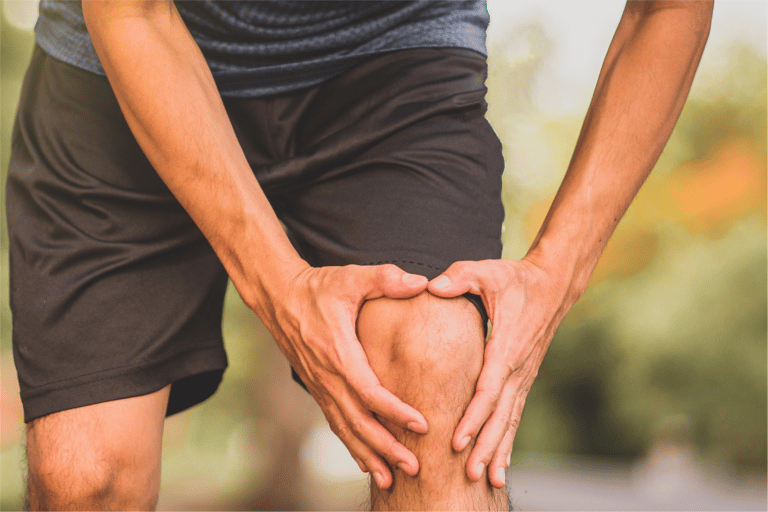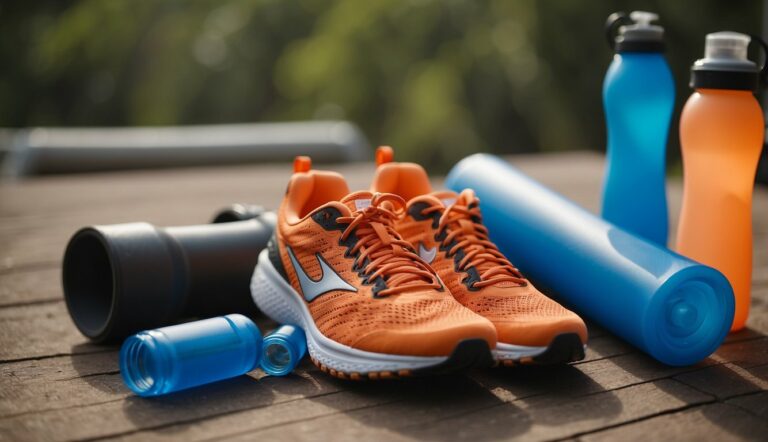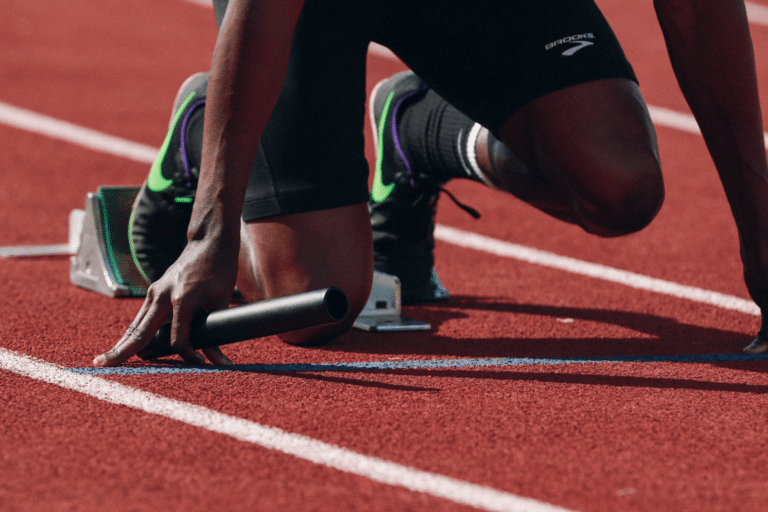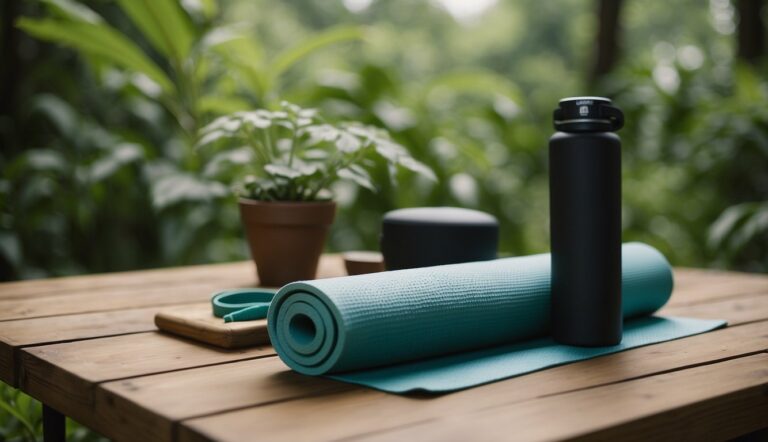Stretching vs. Foam Rolling After a Run: Which Recovery Method Wins?
As a UESCA certified running coach, I often encounter runners who want to understand the best practices for recovery after a run. The debate between stretching and foam rolling is ongoing, but leveraging both properly can aid in recovery and improve performance. Stretching after a run can help to maintain and improve flexibility, which can prevent injuries and keep joints healthy.
Foam rolling, on the other hand, is beneficial for reducing muscle soreness and improving recovery times. It can also increase blood flow to the muscles, which aids in the healing process. However, it’s essential to use foam rolling techniques correctly to get the most benefit post-run.
While both stretching and foam rolling have distinct advantages, incorporating both into a post-run recovery routine can lead to optimal results. Understanding when and how to use each method effectively ensures that you can capitalize on their unique benefits and keep your body in top running condition.
Benefits of Stretching for Runners
As a running coach, I emphasize that incorporating stretching into post-run routines is crucial for enhancing performance and mitigating injury risk.
Enhancing Flexibility and Range of Motion
Stretching, particularly dynamic stretching, plays a significant role in improving a runner’s flexibility. It involves active movements that help muscles achieve greater range of motion.
By doing these stretches, I’ve found that runners can achieve a more efficient stride and may also reduce the risk of certain injuries. Static stretching, where a stretch is held for a period of time, can also contribute to improved flexibility when performed consistently after a run.
- Dynamic Stretches: Leg swings, walking lunges
- Static Stretches: Hamstring stretch, quadriceps stretch
Reducing Muscle Soreness and Stiffness
Post-run muscle soreness and stiffness are common; that’s where stretching can really help. I find that both dynamic and static stretching aid in decreasing these discomforts. For runners, reducing stiffness can also prevent muscle imbalances and overuse injuries. I always recommend a routine of stretching focusing on major leg muscles to facilitate recovery and prepare muscles for the next run.
- Runners’ Experience: Alleviates post-run tightness, promotes quicker muscle recovery
Foam Rolling for Post-Run Recovery
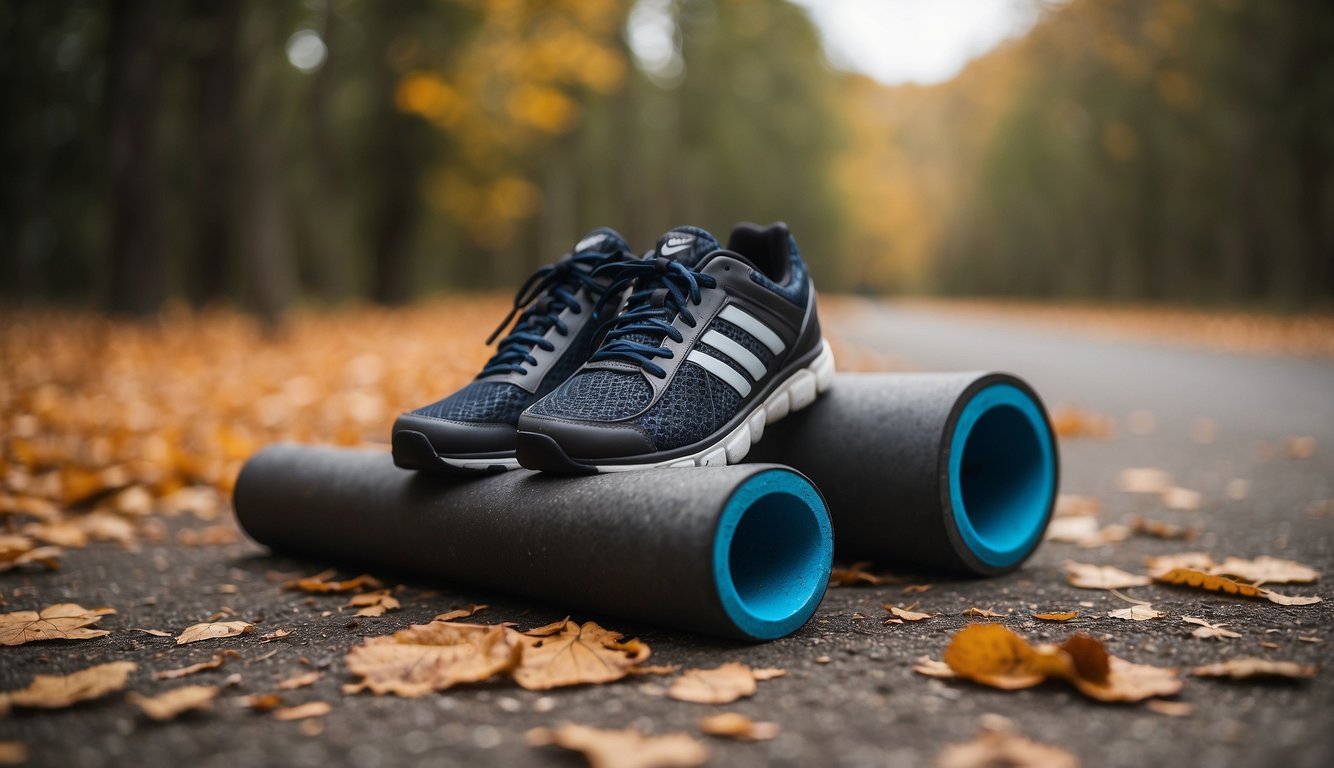
Foam rolling has emerged as a key recovery tool for runners, offering benefits such as enhanced blood flow and myofascial release. Incorporating this practice post-run can significantly aid in muscle relaxation and injury recovery.
Myofascial Release and Muscle Relaxation
Myofascial release is a technique that involves applying gentle, sustained pressure on the soft tissues while applying traction to the fascia. This pressure helps to release the tightness and restrictions within the fascia, leading to:
- Improved muscle function: By working out knots and tension, foam rolling helps muscles return to their normal function. This process can also increase flexibility and range of motion.
- Reduced soreness: Foam rolling after a run aids in diminishing the severity of delayed onset muscle soreness by breaking up adhesions and increasing blood and lymphatic flow.
Impact on Blood Flow and Injury Recovery
Foam rolling is not just beneficial for myofascial release, but also for encouraging blood flow. This is crucial as increased circulation brings oxygen and nutrients needed for repair and growth to the muscles, which can help:
- Speed up recovery: Enhanced blood flow also means faster removal of waste products from muscle tissue.
- Prevent injuries: Regular use of a foam roller may help prevent certain types of running-related injuries by keeping muscles from becoming overly tight and by increasing the body’s ability to bounce back after workouts.
As a UESCA certified running coach, I find that consistency with foam rolling can help maintain overall muscle and fascia health, which is important for both recovery and ongoing performance.
How Stretching and Foam Rolling Contribute to Better Performance
Properly utilized stretching and foam rolling techniques are key to enhancing an athlete’s performance by ensuring muscles are primed for the demands of a workout.
Pre-Run Warmup and Post-Run Recovery
Dynamic stretching and foam rolling before a run serve as critical elements of a warmup routine, vital for preparing the muscles for exercise.
As a UESCA certified running coach, I recommend incorporating movements that mimic running mechanics to increase blood flow, enhance range of motion, and boost overall muscle performance. After a run, static stretching and foam rolling can aid in the recovery process, helping to alleviate tightness and potentially reduce the risk of injuries.
-
- Boosts muscular temperature, which enhances elasticity.
- Reduces tightness, leading to improved range of motion.
- Activates relevant muscle groups, contributing to more efficient movement patterns.
Post-Run Recovery Benefits:
- Aids in reducing muscle soreness.
- Helps in maintaining long-term flexibility.
- Contributes to the expulsion of waste products such as lactic acid from the muscles.
Correlation Between Flexibility and Speed
Increased flexibility, as a product of regular stretching and foam rolling, may contribute to better running performance by allowing for greater stride length and a more efficient running form.
However, flexibility alone does not automatically translate to speed; it is the balanced integration with strength and proper mechanics that can foster improved performance outcomes.
- Key Points on Flexibility and Speed:
- Enhanced flexibility allows for a fuller range of motion.
- Greater range of motion can lead to larger stride lengths and reduced energy expenditure for each stride.
By incorporating targeted stretching and foam rolling into your training, both as a warmup and recovery tool, you support the health of your muscles and can potentially tap into greater performance benefits. Regular practice of these techniques is an integral aspect of a balanced training regimen.
Practical Tips for Implementing Stretching and Foam Rolling into Your Routine
Incorporating stretching and foam rolling into your post-run routine can improve flexibility and speed up recovery. By following specific frequency and timing guidelines and mastering techniques for targeted muscle groups, runners can maximize the benefits.
Frequency and Timing Considerations
When I’m coaching runners, I advise foam rolling and stretching as a post-run practice. Here’s a straightforward routine to follow:
- Foam rolling: Directly after a run, target the muscles you’ve worked. Aim for at least 3-5 minutes per major muscle group (hamstrings, calves, quads, hips, and glutes).
- Stretching: After foam rolling, when muscles are warm, hold static stretches for each major muscle group for about 20-30 seconds.
Here’s a simple schedule table:
| Muscle Group | Foam Roll (min) | Stretch (seconds) |
|---|---|---|
| Hamstrings | 3-5 | 20-30 |
| Calves | 3-5 | 20-30 |
| Quads | 3-5 | 20-30 |
| Hips | 3-5 | 20-30 |
| Glutes | 3-5 | 20-30 |
Techniques for Targeted Muscle Groups
For foam rolling, work on each muscle group with controlled movements:
- Calves: Position the roller under your calves. Roll from the ankle to below the knee, pausing on tight spots.
- Hamstrings: Roll from just above the knee to the glutes. Cross your legs to increase pressure if needed.
- Quads: Face down, roll from above the knee to the hip flexors.
- Hips & Glutes: Sit on the roller and sway side to side, targeting the muscle.
With stretching, focus on these movements:
- Hamstrings: Opt for the classic standing or seated stretch, reaching toward your toes.
- Calves: Use a wall or curb to press the ball of your foot against, heel grounded.
- Quads: Standing, pull your foot towards your glutes, keeping knees in line.
- Hips & Glutes: Perform seated or lying figures-four to relieve tension.
This specificity in your routine, centered around proper frequency and targeted techniques, is key to enhancing recovery and training performance.
Understanding the Science Behind Stretching and Foam Rolling
I’ve examined recent studies and meta-analyses and have also consulted with sport scientists and physical therapists. The focus here is to dissect the impacts of stretching and foam rolling on muscle recovery and performance.
Review of Recent Research and Meta-Analyses
Research reveals that both stretching and foam rolling offer benefits to runners post-exercise. A recent systematic review and meta-analysis found that these practices, often employed to increase joint range of motion (ROM), may have similar effectiveness. However, nuances exist in their impact on physical performance parameters like strength and jump height.
- Stretching is posited to improve flexibility and may reduce muscle stiffness following a run.
- Foam Rolling, classified as a self-myofascial release technique, not only improves ROM but also aids in muscle recovery and potentially reduces muscle pain after exercise.
Opinions from Sport Scientists and Physical Therapists
Physical therapists often recommend these techniques to support muscle recovery. I’ve learned that:
- Stretching can acutely increase ROM and reduce potential for injury.
- Foam Rolling applies pressure on muscle tissue which can break up fascial adhesions, promoting blood flow and aiding in recovery.
Sport scientists and massage therapists suggest that the order and combination of these techniques may affect their efficacy. A balanced approach that includes both may be optimal for post-run recovery and future performance.

